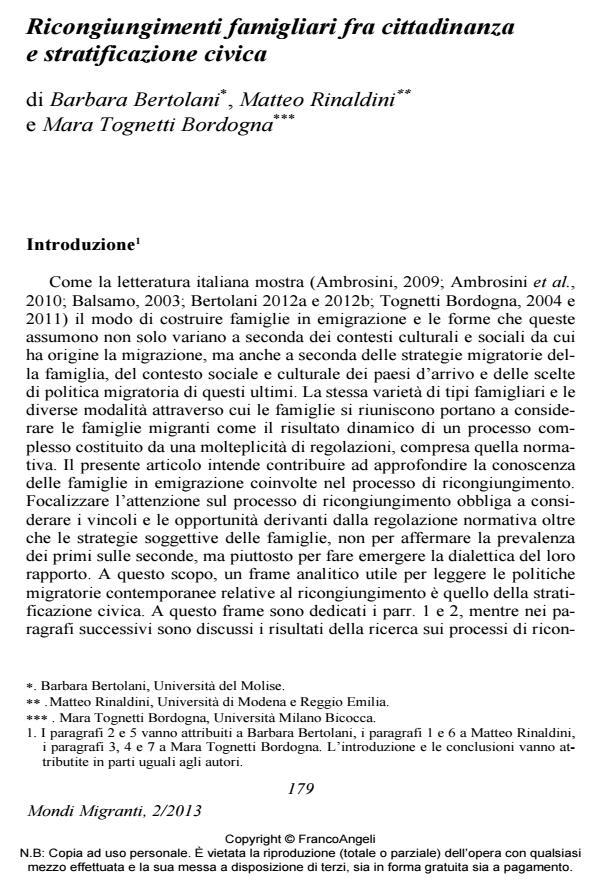Ricongiungimenti famigliari fra cittadinanza e stratificazione civica
Journal title MONDI MIGRANTI
Author/s Barbara Bertolani, Matteo Rinaldini, Mara Tognetti Bordogna
Publishing Year 2013 Issue 2013/2
Language Italian Pages 19 P. 179-197 File size 661 KB
DOI 10.3280/MM2013-002011
DOI is like a bar code for intellectual property: to have more infomation
click here
Below, you can see the article first page
If you want to buy this article in PDF format, you can do it, following the instructions to buy download credits

FrancoAngeli is member of Publishers International Linking Association, Inc (PILA), a not-for-profit association which run the CrossRef service enabling links to and from online scholarly content.
Barbara Bertolani, Matteo Rinaldini, Mara Tognetti Bordogna, Ricongiungimenti famigliari fra cittadinanza e stratificazione civica in "MONDI MIGRANTI" 2/2013, pp 179-197, DOI: 10.3280/MM2013-002011